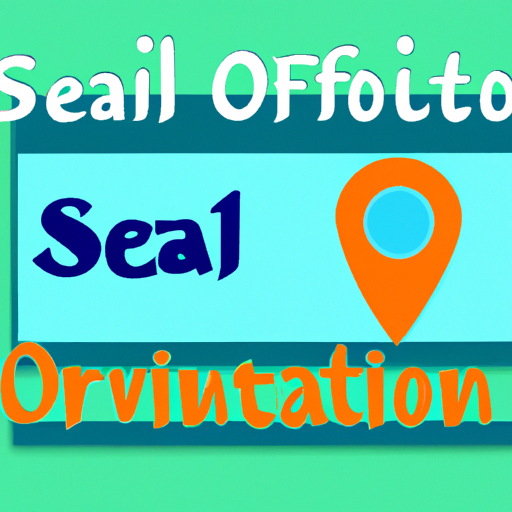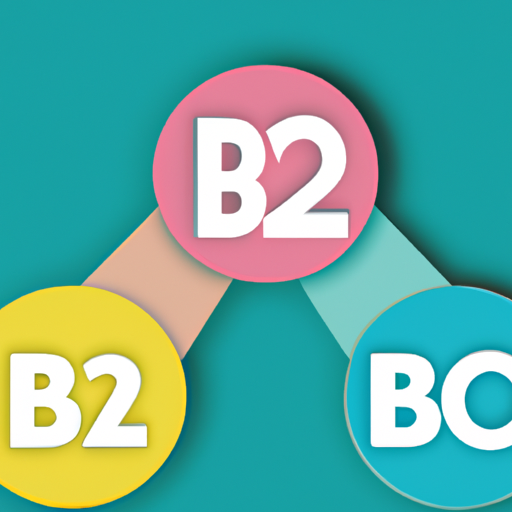
Did you know, as a small business owner, you have a multitude of tax deductions available to help reduce your annual tax bill? Tax deductions lower your taxable income and hence help you save a significant chunk of money. However, navigating the world of tax deductions can be confusing at times. But worry not, this shouldn’t deter you from claiming what’s rightfully yours. Whether you are running your business from home or have a separate entity, you may qualify for multiple tax deductions.
What Are Business Tax Deductions?
Business tax deductions are expenses that you can subtract from your taxable income, thus reducing the amount of taxes you owe. These deductions can include anything from office supplies, equipment, mileage driven for business, to interest on a business loan. Essentially, if it’s a necessary, ordinary, and reasonable expense for running your business, it’s likely a deductible business expense.
Commonly Overlooked Small Business Tax Deductions
- Home Office Deduction: If you use part of your home exclusively for conducting business, you may be eligible for the home office deduction. This can be a room or a separate structure on your property, such as a studio or workshop.
- Vehicle Expenses: If you use your car for business, like meeting clients or visiting job sites, ensure you keep track of your mileage. This can be a substantial tax write-off at the end of the fiscal year.
- Interest: If you’ve taken out a loan or used credit cards to fund your business operations, you can deduct the interest on these debts.
- Depreciation: Major purchases such as vehicles or buildings can’t be expensed all at once, but their value can be gradually deducted over time through depreciation.
The Importance of Keeping Accurate Records
Accurate record-keeping is a crucial part of claiming tax deductions. It’s important to keep track of every single business expense to maximize your deductions and also avoid possible penalties in case of an audit. Consider using a dedicated bank account for business transactions to make record-keeping simpler. Keep receipts, invoices, and other business-related documents in a safe and organized manner.
Consult a Tax Professional
If you feel overwhelmed with tax deductions, or you’re unsure whether a certain expense is deductible or not, it can be beneficial to consult with a tax professional. They can provide extensive knowledge and expertise in this area and help ensure you’re taking full advantage of the tax benefits available to you as a small business.
Taking Advantage of the Section 179 Deduction
Last but certainly not least, the Section 179 deduction is a powerful tax tool for small businesses. This tax code allows businesses to deduct the full purchase price of qualifying equipment or software purchased during the tax year. Instead of depreciating the items over several years, you can deduct the full amount in the year of purchase, significantly reducing your tax liability.
Understanding and effectively using tax deductions is crucial for the financial health of your small business. Appreciating which expenses are tax-deductible, and ensuring you claim these deductions, will allow your business to maximize profitability and success.
]]>
Understanding Inflation and its Impact
If you have some savings tucked away or if you’re taking the bold step to invest your money, kudos to you! You’re working your way to financial freedom! But have you thought about the role of inflation and the impact it can have on your unseen income? Let’s delve more into it.
What is Inflation?
Simply put, inflation is the rate at which the general level of prices for goods and services is rising, and subsequently, purchasing power is falling. In other words, when inflation goes up, each dollar you own buys a smaller percentage of a good or service.
How does Inflation Impact Your Savings?
The value of your money doesn’t stay constant if there’s inflation. When you stash your money under the mattress, or keep it in a low interest savings account, you may not be getting the full value of your earnings. This happens because the cost of goods and services likely increases faster than your savings grow.
Here’s a practical example:
Let’s say you’ve saved $1,000 and the inflation rate is 2%. The value of your savings would decrease to $980 in the first year.
If you get meager interest from your savings account, say 0.5%, your $1,000 becomes $1,005 by the end of the year. Technically, you’ve made money, right? Wrong! After inflation, you can buy only as much as $985 could a year ago. This means, while your bank balance reads a little higher, the purchasing power of your savings has gone down.
So, what can you do?
- Invest in inflation-protected securities: One of the best ways to battle inflation is to put your money
in assets that promise to return more than the inflation rate. Treasury Inflation-Protected Securities (TIPS) are one such examples. - Real estate investment: Real estate can also be a good investment during inflationary periods, as the price of
properties, along with rents, tend to rise. - Invest in stocks: Historically, stocks have offered the most potent protection against inflation, as
companies can raise prices for their goods or services to match the inflation rate.
The key takeaway here is you should aim to have your assets grow faster than the rate of inflation. But remember, inflation is just one of many factors to consider when deciding where and how to invest.
Final Thoughts
While it can be intimidating, understanding key financial concepts like inflation and its effect on your savings and investment strategy is critical to making informed decisions that maximize your hard-earned money. From adjusting your savings strategy to focusing more on investments, there are many ways to keep the erosion of inflation at bay – you simply have to take the initiative.
]]>
Understanding the Concept of Investment Diversification
Have you ever heard the phrase “don’t put all your eggs in one basket”? In the world of investments, that’s essentially what investment diversification is all about. It involves spreading your investments across various assets to manage and mitigate risks. It’s like having a safety net that can help protect your portfolio from market uncertainties.
Why is Diversification Important?
Investment diversification is often regarded as a fundamental strategy for managing investment risks. Here are a few reasons why it’s advisable to diversify your investment portfolio:
- Minimizing risk: By spreading your investments, you limit the damage to your portfolio should one of your assets depreciate in value. This is because the excellent performance of some assets can compensate for the poor performance of others.
- Potential Returns: A diversified portfolio exposes you to a variety of sectors and industries, which can often create more opportunities for returns.
- Capital preservation: For many investors, protecting their initial investment is a priority. While diversification doesn’t guarantee against loss, it’s one of the most critical strategies for long-term financial success.
How Can You Diversify Your Portfolio?
While the idea of diversification seems compelling, you might be wondering how to go about this. Let’s look at some of the ways you can start implementing diversification in your portfolio:
- Invest in Different Asset Classes: This could mean splitting your investments between various classes like stocks, bonds, real estate, and cash equivalents
- Diversify within Asset Classes: This involves expanding on the point above. For example, within the stock category, you could invest in different industries such as tech, health care, or consumer goods. Similarly, with bonds, you could invest in government, municipal, and corporate bonds.
- Geographical Diversification: Another way to diversify is to invest in different geographic regions. By doing so, you are not solely reliant on the performance of one country’s economy.
Is There a Downside to Diversification?
While diversification is an excellent strategy for managing risk, it’s essential to acknowledge that like any investment strategy, it also has potential drawbacks. The main one is that it may limit your potential returns. While diversification can protect you from significant losses, it can also prevent you from experiencing substantial gains if a particular asset class performs exceptionally well.
Making Strategic Decisions
Remember, the goal of diversification is not necessarily to boost performance – it doesn’t guarantee profits or protect completely against losses. Instead, it helps strike a balance between risk and return. According to investment mogul, Warren Buffet, “wide diversification is only required when investors do not understand what they are doing”. So, while diversifying is an essential aspect of investing, understanding your investments is equally important.
Considering all these factors, and your personal risk tolerance, it’s advisable to consult with a financial advisor to help guide your decision-making process. They can assist you in selecting the best diversification strategy tailored based on your investment goals, risk tolerance and time horizon.
]]>
Financial Planning for Entrepreneurs: Everything You Need to Know
Starting a business can be an exciting but challenging undertaking. As an entrepreneur, you need to be ready to take on many roles, one of the most important being a financial planner. But don’t worry, we’ve got you covered with a comprehensive guide on financial planning for entrepreneurs.
The Importance of Financial Planning
Financial planning is an essential part of entrepreneurship. It lays down a roadmap for your business and serves as a guide for key decision-making. It helps entrepreneurs forecast future financial performance, manage funds effectively, and mitigate financial risks.
Step by Step Guide for Financial Planning
- Create a Budget: A budget serves as a blueprint detailing how your business gets and spends money. It allows you to track income, expenses, and evaluate whether you are meeting your financial goals.
- Understand Cash Flow: Cash is king in any business. Understanding cash flow helps in tracking all the money flowing in and out of the business, ensuring sufficient cash to cover day-to-day operations.
- Develop a Savings Plan: Having savings set aside for emergency expenses and future investments is crucial. Being prepared for unexpected costs can keep your business afloat in tough times.
- Consider Insurance: Protect your business from unforeseen events by investing in insurance policies such as liability insurance, property insurance, and worker’s compensation.
- Plan for Taxes: An essential part of financial planning is understanding tax obligations. Ensure to fulfill your tax obligations on time to avoid penalties.
Financial Planning Mistakes to Avoid
- Not Saving for Emergencies: An emergency fund is vital for the health of your business. Without one, unexpected expenses could lead to financial distress or even bankruptcy.
- Not Anticipating Future Expenses: Don’t confine your financial planning to the present. Make sure your financial plan covers potential future expenses such as growth, expansion, or new product development.
- Not Using Professional Help: While it’s possible to manage your finances, getting help from a financial advisor can be beneficial. They bring a wealth of experience and can guide you in making informed financial decisions.
Conclusion
Financial planning can be intimidating for new entrepreneurs, but it is an essential part of building a successful business. By creating a robust financial plan, you can steer clear of financial pitfalls and navigate your way to success.
]]>
Why is Viral Content Important?
Put simply, viral content is any piece of information that is shared extensively on the internet within a short span of time. It can be an image, a video, a blog article, or even a tweet. The term ‘viral’ derives from the similarity the process has with viruses, spreading quickly from person to person. But why is viral content important for marketers and businesses?
- Increases brand visibility: When your content goes viral, it means more people are interacting with your brand. This amplified reach makes your brand more visible and recognizable.
- Attracts more traffic to your website: Viral content can attract loads of traffic to your site. This can potentially increase your revenue, especially if you have monetized your site well.
- Better customer engagement: A viral post can generate a lot of interactions. These can be likes, shares, comments, or even disputes. All these lead to better customer engagement.
Strategies for Creating Viral Content
Creating viral content is not an exact science, but there are strategies that can increase your chances of producing a viral hit. Here’s what you need to focus on:
Emotionally Engaging Content
One common trait of viral content is that it often sparks strong emotional reactions in people. This could be happiness, sadness, anger, surprise, or any other powerful feeling. The stronger the emotion, the more likely it is that people will share it.
High-Quality, Valuable Content
Another characteristic of viral content is the perceived value it offers. To be share-worthy, your content needs to offer meaningful insights, teach the audience something new, or provide an original perspective. It should also be professionally produced to make an impression. Nothing beats high-quality, valuable content.
Content with a Strong Call to Action
Lastly, your content should encourage your audience to engage with it, whether through liking, commenting, sharing, or any other action. A strong call to action can help motivate this engagement.
Tips for Creating Viral Content
- Create a catchy headline. Your headline is the first thing people see. Make sure it’s engaging enough to prompt users to click through and read the rest of your content.
- Make your content shareable. This involves ensuring the content is of quality and also making it easy for visitors to share it. Consider adding social share buttons, for instance.
- Promote your content. Don’t just publish content and hope that it goes viral. Use your social media platforms to promote it. You can also reach out to influencers in your industry to help spread the word.
- Engage with your audience. Encourage your followers to share your content. Respond to their comments and messages. The more you engage with your audience, the more likely they are to share your content.
Remember, going viral isn’t an overnight process. It requires patience and consistent effort. Keep experimenting with different types of content, engage with your audience, and keep an eye on what’s trending. You never know when you’ll hit the jackpot!
]]>
Why is Mobile Optimization So Crucial?
With smartphones everywhere and data like rain in the monsoon, mobile browsing has become as regular as breathing. Mobile optimization is no longer an afterthought, but a prerequisite for any successful online presence. Credit must be given to Google who, with their “mobile first” indexing policy, wake-up-called us all to the importance of mobile optimization.
Demystifying Mobile Optimization
Mobile optimization means re-designing your website to make it friendly for mobile platforms. It ensures your website looks appealing, is easy to navigate, and loads quickly on mobile devices.
Think Mobile, Act Mobile
Imagine you are a customer trying to purchase a product on a mobile site. Would you prefer a site that requires you to pinch, zoom, and scroll or a site that is easily navigable and looks great on your screen? The latter, right? That’s what mobile optimization accomplishes.
Frequently Asked Questions about Mobile Optimization
Why should I optimize my website for mobile?
- Mobile traffic: Over 50% of global website traffic comes from mobile devices. If your site isn’t optimized for mobile, you’re missing out on a significant slice of potential customers.
- User experience: Mobile users expect a seamless experience. An unoptimized site is likely to frustrate them and increase the likelihood they’ll bounce and look elsewhere.
- SEO rankings: Google’s mobile-first indexing means it primarily uses the mobile version of content for indexing and ranking. Unoptimized sites can experience a decline in rankings, reducing visibility and traffic.
What are some best practices for mobile optimization?
- Responsive design: This design gives your site the ability to flex and adapt to any screen size, providing a relevant and efficient experience for all users.
- Fast load times: Users have low patience for slow sites. A delay as small as three seconds can make over half your visitors leave.
- Simple navigation: Small buttons and hard-to-read typefaces can be troublesome on mobile. Make navigation easy and intuitive with clear, easy-to-click elements.
- Optimized media: Large images or video files can slow your site down. Compress and optimize your media for faster page loading.
In a Nutshell…
Ignoring mobile optimization is, in essence, turning your back on a vast segment of your potential user base. Accept this web development essential, and you’ll be able to serve your users effectively, no matter what device they may be on.
Still Have Questions?
If you find this topic baffling or just don’t know where to start, don’t worry. Consult with a professional web development service, and they can help guide you through the process. After all, in this digital age, getting the mobile aspect right can be the key that unlocks the door to online success.
]]>
What is Brand Identity?
In the world of business and marketing, brand identity holds an essential space. It is the collection of all brand elements that a company creates to portray desired images of itself to the consumers. As it’s often said, your brand identity is what ‘you’ want the consumers to perceive about your product or service. It typically includes creative elements like your logo, typography, color palettes, design system, and more.
Key Components of Brand Identity
The main components of a strong brand identity include:
- Logo: This represents your brand at the most basic level.
- Color Palette: Specific colors associated with your brand.
- Typography: The fonts you use in your designs and communications.
- Imagery: The type of photos or graphics that represent your brand.
- Brand Voice: The tone and style in which your brand communicates.
What is Brand Image?
While brand identity comes from the brand itself, the brand image is how the customers actually perceive and interpret the brand. It is the mental picture that consumers form about a brand based on their experiences, perceptions, and interactions with it.
Factors Influencing Brand Image
Several factors influence the image of a brand, such as:
- Product Performance: How well the product or service meets customer expectations.
- Communication: This includes advertising, public relations, and how the brand communicates with its customers.
- Pricing: How the cost of the product or service compares to competitors and whether customers see it as good value.
Understanding the Difference
Though interchangeably used, brand identity and brand image aren’t the same. The employment of the right strategies to align both can lead to a successful brand. Remember, a strong brand identity should positively influence your brand image, and a positive brand image verifies that your brand identity resonates with consumers.
Key Differences
- Source: Brand identity is created by the company while the brand image is formed by the consumers.
- Control: A company has control over its brand identity but has no control over the brand image as it relies on consumer perception.
- Changeability: Brand identity can be changed and redesigned according to the company’s intentions, but changing a brand image is challenging because it’s based on consumer experiences and perceptions over time.
Conclusion: Striking a Balance
Understanding the difference between brand identity and brand image is key to establishing a successful brand. Both should be considered in your marketing strategies. Remember, a high-performing company aligns its corporate image (how it wants to be seen) with its corporate identity (how it really is), resulting in a positive corporate reputation.
]]>
Building trust with your target audience is essential for the success of your business. With the advent of the information age, it has become more prevalent that consumers make their buying decisions based on online reviews, ratings, and social proof. Understanding and leveraging these aspects to win customers’ trust can significantly impact your business growth.
What is Social Proof?
Social proof is a psychological phenomenon in which people mimic the actions of others in an attempt to reflect proper behavior under certain circumstances. In terms of the e-commerce world, it means that potential customers, unsure of what to purchase, would typically go with the option that others seem to approve.
Why are Reviews and Ratings Important?
The influence of online reviews and ratings is undeniable. These are a type of social proof that can greatly affect the decision-making process of a potential buyer. Here are a few reasons:
- Building Trust: Genuine reviews contribute to the trustworthiness of your brand and its products. It gives potential customers more confidence in your offerings.
- Improve SEO: User-generated content like reviews can help improve your SEO. Search engines love fresh and unique content, and reviews can provide just that.
- Boost Sales: Positive reviews can lead to more sales. People are more inclined to purchase a product that others found useful or enjoyable.
How to Leverage Social Proof, Reviews, and Ratings?
There are several ways in which you can turn these factors to your advantage:
- Display Reviews and Ratings: Make sure to display your product or service reviews visibly on your site. On your product pages, it’s preferred to have them right next to the product details. The same goes for service reviews.
- Promote User-Generated Content: Actively encourage your customers to leave reviews and generate content. Make them feel valued for their input, and this will also contribute to the community aspect of your brand. Share these reviews on social media, website, and other platforms.
- Respond to Reviews: All reviews, good or bad, deserve your attention. Thank your customers for positive reviews and address the concerns raised in negative ones. This signifies your care towards them and might improve your reputation as well.
Final Thoughts
Leveraging social proof, reviews, and ratings is a great way to build trust, enhance your brand’s online presence, and eventually drive more sales. However, make sure to treat your customers with respect and handle negative feedbacks delicately while taking them as constructive criticism for improvements. Remember, customer satisfaction is the key to a successful business!
]]>
Understanding Local SEO
If you are a small business owner, you may have heard of the term SEO, or Search Engine Optimization. This is the practice of optimizing your website to get more organic traffic from search engines. But what is Local SEO, and why is it important for your small business?
Local SEO is a strategy that helps your business be more visible in local search results on Google. Any business with a physical location or that serves a geographic area can benefit from local SEO. If you search a service or product on Google, you’ll often see a map at the top of the search results, followed by local businesses that match what you’re looking for – and this is exactly where you want your small business to appear.
Local SEO Strategies for Your Small Business
Want to achieve this visibility? Here are some effective local SEO strategies for your small business!
1. Claim your Google My Business listing
Your Google My Business listing can have a significant impact on your local SEO strategy. If you haven’t claimed your listing, now is the time to do so. You can add important information about your business such as your address, opening hours, phone number and more. It also allows customers to leave reviews, which plays a critical role in local SEO.
2. Optimize for mobile
Increasingly, people are using their mobile devices to search for businesses and services. Make sure your website is mobile-friendly, as this not only impacts your site’s ranking, but can also determine whether a potential customer stays on your site or decides to look elsewhere.
3. Prioritize local keywords
Focus on incorporating local keywords into your SEO strategy. These could be related to your location – for instance, if your business is a bakery in Toronto, your local keywords could be ‘Toronto bakery’ or ‘bakery in Toronto’.
4. Encourage customer reviews
Reviews are vital for local SEO. Encourage happy customers to leave reviews on your Google My Business page. This not only improves your ranking but also builds trust with potential customers.
5. Use social media to your advantage
Businesses that have an active social media presence often rank higher in local search results. Use your social media platforms to engage with your audience, share relevant content, and promote your products or services.
The Key Takeaway
Local SEO is essential for any small business hoping to stay competitive in their local market. By taking the time to implement these strategies, you can significantly increase your visibility in local search results and attract more customers to your business. Remember, SEO is not a one-time action, but a continuous process that requires time and effort. Take the plunge and start optimizing today!
]]>
Introduction
When it comes to Business-to-Business (B2B) content marketing, blogs play an essential role. They can help propel your brand forward, position it as an industry leader, and generate leads in ways that other forms of content simply can’t. In this article, we’ll answer the most common questions about the role of blogs in B2B content marketing and provide some expert advice to take your content marketing strategy to the next level.
Why are blogs crucial in B2B content marketing?
Blogs are not just a sporadic activity or a harmless passion project; they are a powerful tool that can drive significant growth for your business. Here’s why:
- Thought Leadership: Blogs offer a platform to share your expertise, positioning your business as a thought leader in the industry. This can boost your credibility and trust amongst potential clients.
- Search Engine Optimization (SEO): Consistent blogging can also significantly improve your website’s SEO. By strategically using keywords and creating valuable content, you can improve your online visibility and attract more traffic.
- Lead Generation: A well-crafted blog post can compel readers to take action, such as subscribing to your newsletter or filling out a contact form, thus generating potential leads.
How frequently should businesses blog?
The answer to this question largely depends on your business goals, resources, and audience. However, a good rule of thumb would be to post at least once a week. Posting regularly not only keeps your audience engaged but also helps improve your SEO ranking.
What should businesses blog about?
The crucial thing to remember here is that your blogs should provide value to your readers. This could mean creating content that:
- Answers a common question in your industry.
- Offers unique insights, advice, or perspectives.
- Shares a success story or a case study.
- Introduces new industry trends or technologies.
Tips to standout in B2B Content Marketing
Now, let’s delve into some authoritative advice for businesses trying to stand out via their blogs.
- Optimize your content for SEO: Make each blog post SEO-friendly by incorporating relevant keywords, adding alt tags to images, and including internal and external links.
- Utilize data-driven insights: Use tools like Google Analytics to see what’s working and what’s not. These insights can help guide your content strategy and improve user engagement.
- Engage with your readers: Encourage your readers to post comments, and engage with them. Listening to their needs can give you insights into the type of content they like.
- Encourage sharing: Make it easy for your readers to share your blogs on social media. This helps to increase the reach of your content.
Conclusion
In the ever-evolving universe of B2B marketing, blogging remains a reliable cornerstone. If it’s providing value to the audience and is written well, a good blog can significantly boost your business’ online presence and generate leads. Consider implementing these tips and techniques to make the most out of your content marketing strategy.
]]>